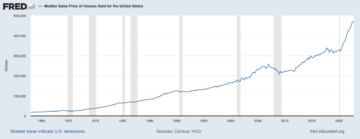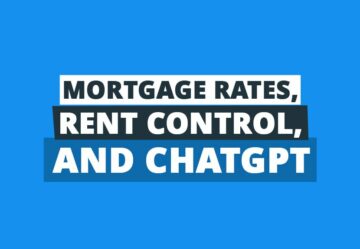For high-earners raking in between $150,000 and $650,000 annually, a move from New York City to Miami provides the opportunity to save thousands through a reduced effective tax rate and a decrease in the cost of living, according to a SmartAsset study. San Francisco residents can realize similar savings by relocating to Miami.
It’s not that Miami is cheap—the cost of living is 22.8% higher than the national average, and the median sale price for homes in Miami is about 34% higher than the national median, according to data from Redfin. But it’s still cheaper to buy a home, rent an apartment, or even go to a restaurant or grocery store in Miami than in notoriously expensive cities like NYC.
But that could all change as more New Yorkers migrate to Miami in hopes of getting more out of their income. Miami residents began taking notice of their new neighbors from New York last year, blaming the skyrocketing rents in the city on heightened demand created by movers. The savings potential is likely to shrink as Miami home values and rents increase amid constricted supply. Furthermore, homeowners insurance rates in Florida are increasing dramatically due to climate change, with premium hikes outpacing every other state. And a surge in property taxes for newly acquired homes is taking new residents by surprise.
Saving Money with a Miami Move: Current Estimates
The difference in cost-of-living estimates for these two cities is the most significant. Costs in NYC are 137.6% higher overall when compared to the national average, while costs in Miami are only 22.8% higher. Residing in Miami means an effective tax rate of between 27% and 35% for high earners, depending on their income when compared to an effective tax rate between 36% and 45% in NYC. This means savings of nearly $49,000 for NYC movers earning $150,000 annually and up to a savings of $195,000 for movers with a $650,000 annual salary.
While the cost-of-living difference between San Francisco and Miami is not as pronounced, San Francisco residents still stand to save a pretty penny by relocating. Costs in San Francisco are 82.8% higher than the national average, 60 percentage points higher than in Miami. Meanwhile, effective tax rates drop from a range of 36% to 46% in San Francisco to as low as 27% in Miami. A $150,000 earner in San Francisco can save just over $36,000 per year by making the move, while a $650,000 earner can save a little more than $153,000.
The savings for a Chicago to Miami move are less substantial, showing how tax savings can be offset by a cost-of-living increase. Miami is more expensive than Chicago—The cost of living in Chicago is only 17.1% more than average—and, notably, the median sale price of homes in Miami is about 65% higher than in Chicago, according to Redfin. But tax savings of nearly five points across earners with high incomes mean that a Chicago resident earning $650,000 could still save almost $11,000 by moving to Miami.
How Will Miami Migration Affect the Real Estate Market?
Miami home values have a long way to rise before catching up to NYC—the median home sale price would need to increase 46% while NYC prices stagnate, based on Redfin data. And home prices would need to rise further than that to cancel out the tax savings available to high earners relocating from NYC.
While Miami home sale prices have risen against the norm in the past year, home price increases have been tempered by rising interest rates and an uncertain economy. Meanwhile, there is still an insufficient supply of homes in New York City to meet the demand for housing, according to a U.S. News housing market forecast from March. Real estate agents are still observing bidding wars in some areas, and overall, the market appears to be holding steady. Rental vacancy rates are also down year-over-year. Without falling prices in New York City, Miami’s cost of living would need to suddenly skyrocket to dissolve the savings movers can achieve.
Still, rising prices in Florida are already making the move less attractive, a local broker told the New York Post. While 10,824 New Yorkers made the move to Miami in the first quarter of 2023, that number is down from 14,834 the year prior, according to data from the Florida Department of Highway Safety. Expensive cities in Florida, like Miami and Palm Beach, saw the largest influx of new residents from NYC—the data follows the narrative that high earners from the city are seeking less expensive (but still luxurious) places to call home.
Is Miami the Best Move?
It’s likely that high earners will continue to reap the rewards of an NYC or San Francisco to Miami move for years to come. But there are other factors to consider before permanently relocating to the Sunshine State. Recently, some new Florida homeowners have seen an increase in their property taxes, making them regret their decision to flee other states with higher tax rates. The tax burden of rising home values mainly falls on homebuyers getting into their first homes and people relocating from out of state due to a law that caps rates for existing homeowners.
There’s another factor that’s even more concerning. Just a few decades from now, scientists expect downtown Miami to be underwater. By 2060, almost 60% of Miami-Dade County is expected to be submerged. But you’ve still got years to live in Miami before climate change makes the city uninhabitable, right?
Maybe, but if a hurricane hits your Miami property, you may need to live elsewhere during the repairs. Not to mention, the cost of insuring your home could skyrocket. Some insurers have already begun declining to issue homeowners insurance policies in parts of Florida after massive losses. You can still get a policy, but it will cost you. Florida has experienced a 57% homeowners insurance premium hike since 2015, the highest of any state in the nation, along with a 131% increase in flood insurance rates.
The problem will only get worse as more weather events impact Florida’s coastal cities. Eventually, Miami will become uninsurable. What may occur with the real estate market then could be catastrophic. If you get stuck with a property that can’t be insured, it may be tough to sell as well.
The Bottom Line
The combined savings from the reduced cost of living and decreased effective tax rate are substantial for high-earning residents of NYC and San Francisco opting to move to Miami. And remote work has made it possible for many high earners to pack up and relocate with ease.
But as more people leave these high-priced cities and migrate to Florida, real estate in popular cities like Miami will be affected. The potential savings could shrink, especially if home values in San Francisco and NYC decline. And New Yorkers looking to settle down in a new state for the long term should consider the effects of climate change before relocating to coastal Florida. Still, if your job allows you the freedom to relocate, choosing an area with a lower tax rate and cost of living is a good strategy.
Find an Agent in Minutes
Match with an investor-friendly agent who can help you find, analyze, and close your next deal.
Note By BiggerPockets: These are opinions written by the author and do not necessarily represent the opinions of BiggerPockets.
- SEO Powered Content & PR Distribution. Get Amplified Today.
- PlatoData.Network Vertical Generative Ai. Empower Yourself. Access Here.
- PlatoAiStream. Web3 Intelligence. Knowledge Amplified. Access Here.
- PlatoESG. Automotive / EVs, Carbon, CleanTech, Energy, Environment, Solar, Waste Management. Access Here.
- BlockOffsets. Modernizing Environmental Offset Ownership. Access Here.
- Source: https://www.biggerpockets.com/blog/moving-to-miami-could-save-thousands-but-what-is-that-doing-to-prices
- :has
- :is
- :not
- $UP
- 000
- 14
- 17
- 2015
- 2023
- 22
- 24
- 35%
- 60
- a
- About
- According
- Achieve
- acquired
- across
- affect
- After
- against
- Agent
- agents
- All
- allows
- along
- already
- also
- Amid
- an
- analyze
- and
- annual
- Annually
- Another
- any
- Apartment
- ARE
- AREA
- areas
- AS
- attractive
- author
- available
- average
- based
- BE
- Beach
- become
- been
- before
- began
- BEST
- between
- Block
- border
- Bottom
- broker
- burden
- but
- buy
- by
- call
- CAN
- caps
- catastrophic
- catching
- change
- chicago
- choosing
- Cities
- City
- Climate
- Climate change
- Close
- combined
- come
- compared
- concerning
- Consider
- continue
- Cost
- Costs
- could
- county
- created
- Current
- data
- deal
- decades
- decision
- Decline
- decrease
- Demand
- Department
- Depending
- difference
- do
- down
- Downtown
- Drop
- due
- during
- Earning
- ease
- economy
- Effective
- effects
- elsewhere
- especially
- estate
- estimates
- Even
- events
- eventually
- Every
- existing
- expect
- expected
- expensive
- experienced
- factor
- factors
- Falling
- Falls
- few
- Find
- First
- five
- flood
- florida
- follows
- For
- Francisco
- Freedom
- from
- further
- Furthermore
- get
- getting
- Go
- good
- grocery
- Have
- heightened
- help
- Hidden
- High
- higher
- highest
- Highway
- highway safety
- Hikes
- Hits
- holding
- Home
- Homes
- hopes
- housing
- How
- HTML
- HTTPS
- hurricane
- if
- Impact
- in
- Income
- Increase
- Increases
- influx
- insurance
- insurers
- interest
- Interest Rates
- into
- IT
- Job
- just
- Know
- largest
- Last
- Last Year
- Law
- Leave
- less
- LG
- like
- likely
- little
- live
- living
- local
- Long
- looking
- losses
- Low
- lower
- luxurious
- made
- mainly
- MAKES
- Making
- many
- March
- Market
- massive
- May..
- mean
- means
- Meanwhile
- Meet
- mention
- Miami
- migrate
- migration
- money
- more
- most
- move
- Movers
- moving
- NARRATIVE
- nation
- National
- nearly
- necessarily
- Need
- neighbors
- New
- New York
- new york city
- newly
- next
- notably
- Notice..
- now
- number
- NYC
- observing
- occur
- of
- offset
- on
- only
- Opinions
- Opportunity
- opting
- or
- Other
- out
- over
- overall
- Pack
- palm
- parts
- past
- People
- percentage
- permanently
- Places
- plato
- Plato Data Intelligence
- PlatoData
- points
- policies
- policy
- Popular
- possible
- Post
- potential
- Premium
- pretty
- price
- Prices
- Prior
- Problem
- pronounced
- property
- provides
- Quarter
- range
- Rate
- Rates
- real
- real estate
- real estate market
- realize
- recently
- Redfin
- Reduced
- regret
- relative
- remote
- remote work
- Rent
- Rental
- represent
- residents
- restaurant
- Rewards
- right
- Rise
- Risen
- rising
- round
- s
- Safety
- salary
- sale
- San
- San Francisco
- Save
- Savings
- saw
- scientists
- seeking
- seen
- sell
- settle
- should
- showing
- significant
- similar
- since
- skyrocket
- some
- stand
- State
- States
- steady
- Still
- store
- Strategy
- substantial
- sunshine
- supply
- surprise
- taking
- tax
- term
- than
- that
- The
- their
- Them
- then
- There.
- These
- this
- thousands
- Through
- to
- tough
- true
- two
- u.s.
- Uncertain
- underwater
- Values
- VOX
- Way..
- Weather
- WELL
- What
- when
- while
- WHO
- will
- with
- without
- Work
- worse
- would
- written
- year
- years
- york
- you
- Your
- zephyrnet











